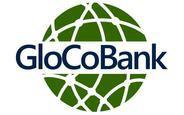‘Near-Money in History: Cryptocurrencies Versus Bills of Exchange’
Pilar Nogues-Marco, University of Geneva & Nektarios Aslanidis, Universitat Rovira I Virgili
Cryptocurrencies have the potential to radically change the payments system. The market capitalization of cryptocurrencies has grown massively since the birth of Bitcoin (BTC) in 2009, reaching a peak of nearly $3 trillion in Nov 2021, although it has reduced drastically after the recent meltdown in the crypto market, being currently near $1 trillion (Sep 2022). Only Bitcoin's market capitalization reached $1 trillion in 2021 (being currently $379 billion - Sep 2022), turning it in the third largest "currency" in circulation in the world after the US dollar and the Euro, which makes cryptocurrencies "too important to ignore" (Laboure 2021). Notice that most of the impressive growth in the cryptocurrency market has happened after the outbreak of the COVID-19 pandemic, followed by a crash at the end of the pandemic. Nowadays, cryptocurrencies are especially relevant not only because of their significant market size, but mainly because of the interweaving of cryptocurrencies with financial institutions (e.g., investment banks, venture capital, hedge funds and pension funds) and its acceptance as legal tender in some developing countries (El Salvador and the Central African Republic accept Bitcoin as legal tender.
Cryptocurrencies appear today as an exception to the central monetary sovereignty driven by the technological revolution in money and payment systems (Arner et al. 2020a). However, decentralized private near-money is not a new phenomenon in history, as it was the general rule in Europe long before the establishment of national central banks. Especially important was the bill of exchange, a crucial innovation that structured the European commercial-finance network of the preindustrial world (Nogues-Marco 2018). Indeed, the emergence of a liquid European market for bills of exchange organized along the lines defined by trading relations provided the infrastructure for financial development in the era of the Commercial Revolution (Flandreau et al. 2009a, 2009b). The Commercial Revolution in turn fostered the Industrial Revolution and Modern Economic Growth (Maddison 2004).
In practice, these two types of near-monies, cryptocurrencies and bills of exchange, were envisaged to mitigate asymmetric information in payments. Bitcoin is conceived as a peer-to-peer electronic cash system intended to allow online payments to be sent directly from one party to another without the need of a financial intermediary serving as trusted third party to verify every transaction in order to prevent double-spending; that is, how can a receiver of digital money be sure that it has not been simultaneously sent to someone else? Bitcoin is based on a decentralized ledger verification technology (DLT), known as a blockchain, which contains an immutable record of all transactions to ensure trust in online payments in the era of the Digital Revolution (Nakamoto 2008; Mills et al. 2016; Arner et al. 2020a). Similarly, bills of exchange emerged in the Middle Ages as a new payment system for transactions across European cities since transferring hard currency (gold and silver) was costly and risky. Initially, the use of bills of exchange was limited to personal networks, but the "invention" of endorsement in the late 16th century made this near-money a negotiable instrument that supported quasi-impersonal long-distance exchanges in the era of the Commercial Revolution (17th-18th centuries). This happened because endorsement ameliorated adverse selection problem caused by the incentive of sellers to pass on the bills of riskier debtors since all parties involved in a bill transaction (the payer, all the endorsers, and the drawer) were joint responsible for the payment (Schnabel and Shin 2004, Santarosa 2015). In practice, the seller signed the back of the bill each time it passed from one party to another, creating a record of the history of transactions similar to the blockchain technology nowadays.
The present article compares the function of cryptocurrencies as a means of payments in the era of the Digital Revolution (early 21st century) with bills of exchange at the peak of the Commercial Revolution (second half of the 18th century). First, we examine the features of these two types of near-monies in order to conceptualize the potential role of near-moneys as means of payments. Then, we construct quantitative measures of market inter-connectedness adopting the Diebold and Yilmaz approach to measure spillovers of near-monies versus hard currencies and financial assets. Using this methodology, we aim to test empirically the functions of near-monies as means of payments versus financial assets.
Examining the effect of cryptocurrencies across international financial markets is a main concern for policy makers and academics. Our results have several practical implications. First, unpacking the way near-monies are linked with the financial markets, not only conceptually, but mainly empirically, can provide insights for investment and portfolio diversification that can be applied to analyze systemic risk, asset allocation and hedging. Second, after the COVID-19 pandemic there are reduced diversification benefits in the cryptocurrency market. Third, from a regulatory perspective, if cryptocurrencies were to become legal tender at some point in time, policymakers should evaluate the potentially disruptive effects of such a highly interconnected market. Overall, our research has important implications for fund management and policy making, as it provides important information for portfolio design and rebalancing.
Ph.D. in Economics (International Finance) at Sciences-Po Paris, Pilar Nogues-Marco is an Associate Professor in Economic History at the University of Geneva (Paul Bairoch Institute) and a Research Fellow at Centre for Economic Policy Research (CEPR). Her research focuses on monetary and financial history from the early modern period to nowadays, being the main research interests: financial development, monetary systems, and globalization. Before joining the University of Geneva in 2015, she held teaching and research positions at Carlos III University of Madrid, University Pompeu Fabra, Sciences-Po Paris, and University of Barcelona.



